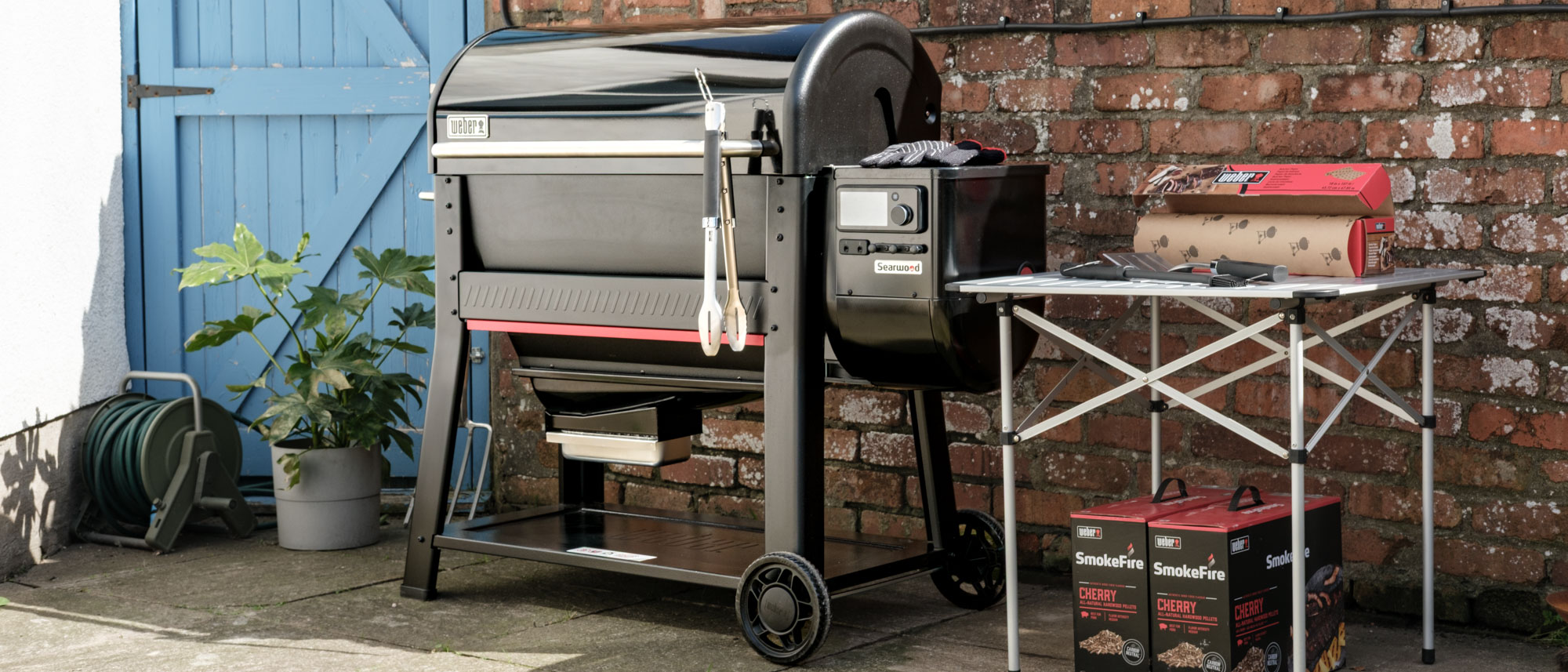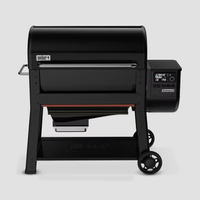Tom's Guide Verdict
Beautifully made, intuitive and easy to get great results from, the Weber Searwood XL 600 is an excellent mid-range smoker and grill, perfect for beginner smokers and even the more experienced, too. While it won’t get as hot as charcoal or gas grills, its 600F maximum temperature is hot enough for some decent searing too. Its pellets give a gentler smoke taste than chips, but an intensive SmokeBoost mode will allow for smokier profiles if wanted. While its onboard controls are fantastic, its companion app is even better, allowing you to get on with your life and control that 16-hour smoke from afar.
Pros
- +
Great for smoking
- +
Can smoke and sear
- +
Lots of space to cook
- +
Simple, fantastic controls
- +
Brilliant companion app
- +
Sturdy build
Cons
- -
No built-in storage
- -
Hopper gauge inaccurate
- -
(U.K. only) Pellets tricky to source
Why you can trust Tom's Guide
I’ll admit it straight away: I’m a novice at smoking food. But I’m not a novice to cooking or indeed grilling. In fact, I’m a trained chef, so I’ve done my time over a hot plate. I’m often considered the de facto cook at barbecues, even when I’d rather just sit and drink some beer.
When I got the opportunity to test out the Weber Searwood XL 600 pellet smoker and grill, I was pretty intrigued. I’d heard that pellet grills are a great entry point for newcomers like me.
Could I get amazing-tasting smoked food without any prior experience? And how would the grill handle traditional barbecue food? There was only one way to find out. And believe me, it wasn’t a chore.
I spent several days using the Weber Searwood XL 600 and absolutely loved it. This is one of the best grills for new or intermediate smokers looking for a family-sized, easy-to-use, tech-filled grill.
Find out more in my full Weber Searwood XL 600 review.
Disclaimer
Editor’s note: The Searwood XL 600 requires assembly. Weber sent me a demo unit which was pre-assembled. That means I can’t comment on the ease of assembly.
Weber Searwood XL 600 review: Price & availability
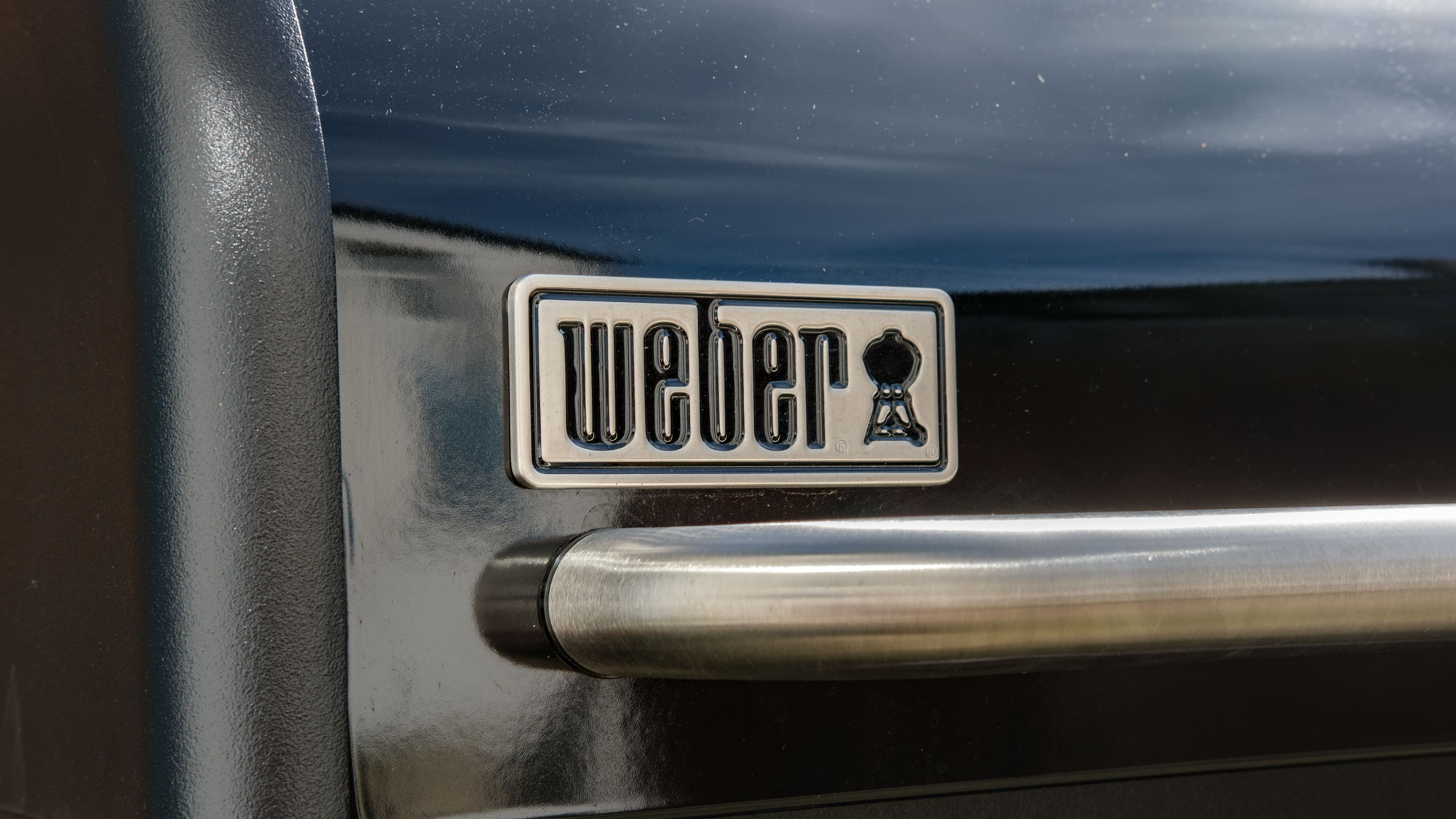
The Weber Searwood XL 600 costs $1,199 from Weber U.S. or £1,399 from Weber U.K., or there’s a smaller non-XL version for $899 / £1,099. This is a mid-range smoker/grill. Weber’s similarly-sized Summit Kamado-style grill, which can also be used for smoking, costs $2,149.
With 972 square inches of cooking space (630 on the main grate, and a further 342 on the top grate), you’re getting virtually the same space as the 970-square-inch Traeger Woodridge Pro ($999) and Traeger Woodridge Elite ($1,599) pellet smokers.
Weber Searwood XL 600 review: Fuel
The Searwood XL 600 burns small wooden pellets to create smoke, instead of real wood chips (it can’t use these). Pellets can be more economical than chips long term but produce a less-intense smoke flavor.
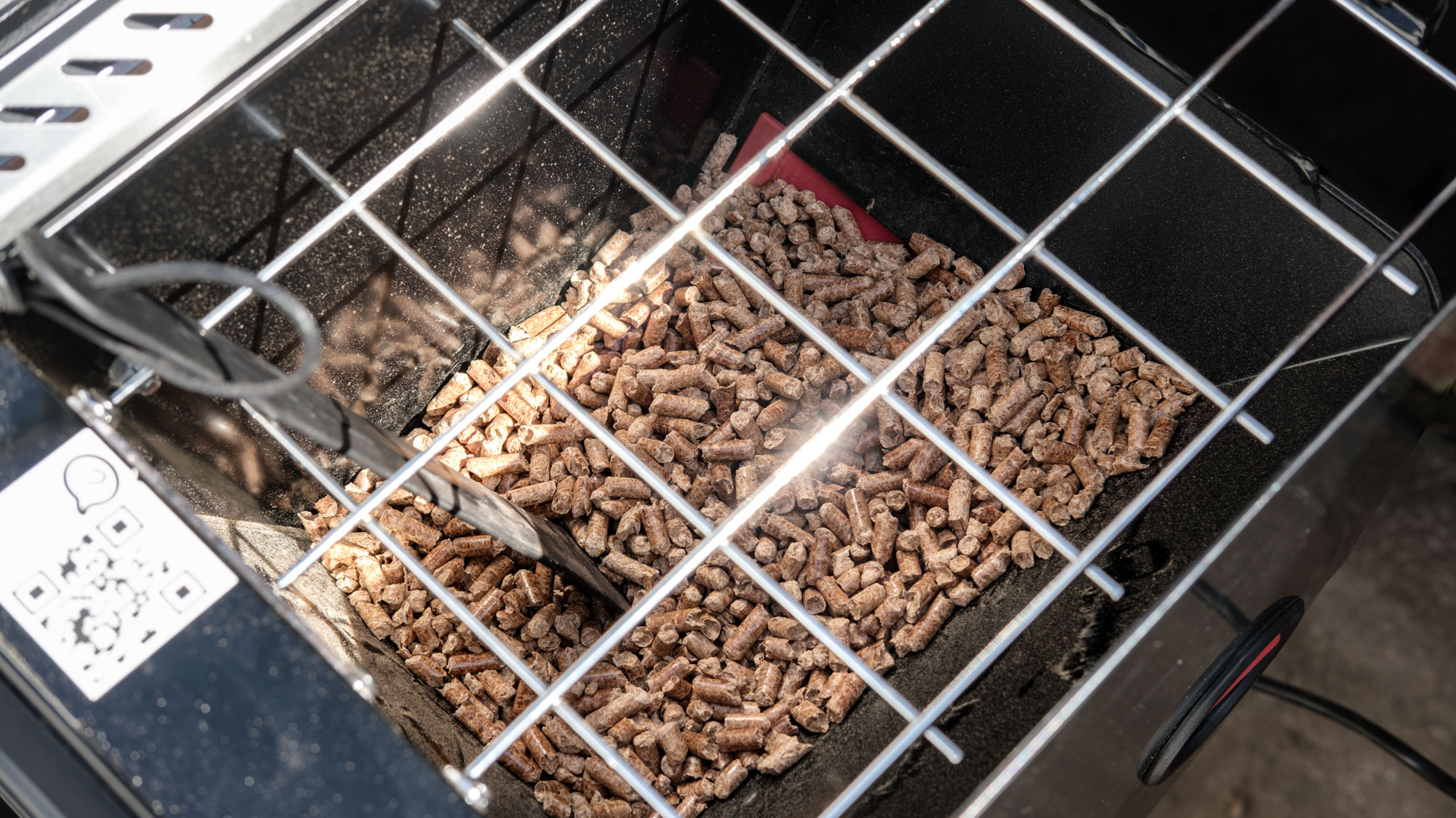
Weber advises only using its pellets to avoid blocking the chute. I’d instead advise buying a box of Weber pellets to get an idea of their size, then buying third party pellets you know will fit.
For my fellow Brits: pellets are not easy to come by here in the U.K., where smoking isn’t super popular (yet). You won’t be able to pick them up at gas stations as you would charcoal, and you won’t even find them at B&Q (our version of Home Depot) or garden centers.
A mid-range pellet grill with user friendly controls, a fantastic companion app and plenty of cooking space. It produces great smoked food and is perfect for both new and intermediate smokers.
I started running out of pellets with an impending barbecue the next day. After frantically visiting every garden center I could, I resorted to Amazon next day delivery and hoped for the best. Don’t be me: keep a healthy stock of pellets.
Weber Searwood XL 600 review: Design & features
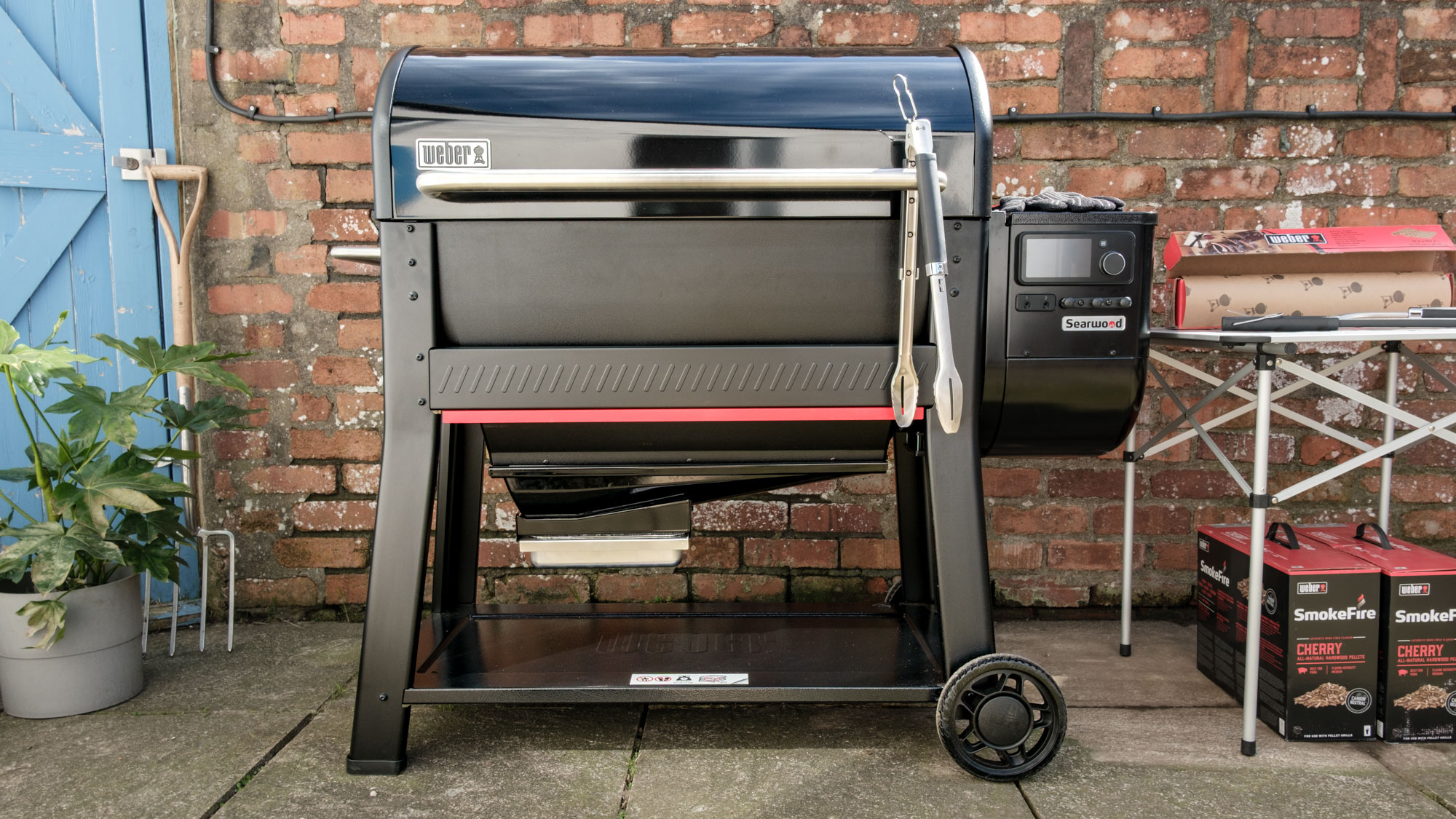
While the Searwood isn’t head-turningly pretty, it doesn’t look bad by any means. It’s fairly similar to Traeger smokers, and whether you prefer Weber’s polished look over Traeger’s more utilitarian, ranch-esque styling is a matter of personal preference.
The Searwood feels extremely high quality, from its metal frame and hood down to the sturdy wheels. As I mentioned above, the grill has a main grate plus a top grate, for a total of 972 square inches of cooking space. That’s plenty for mid-to-large barbecues.
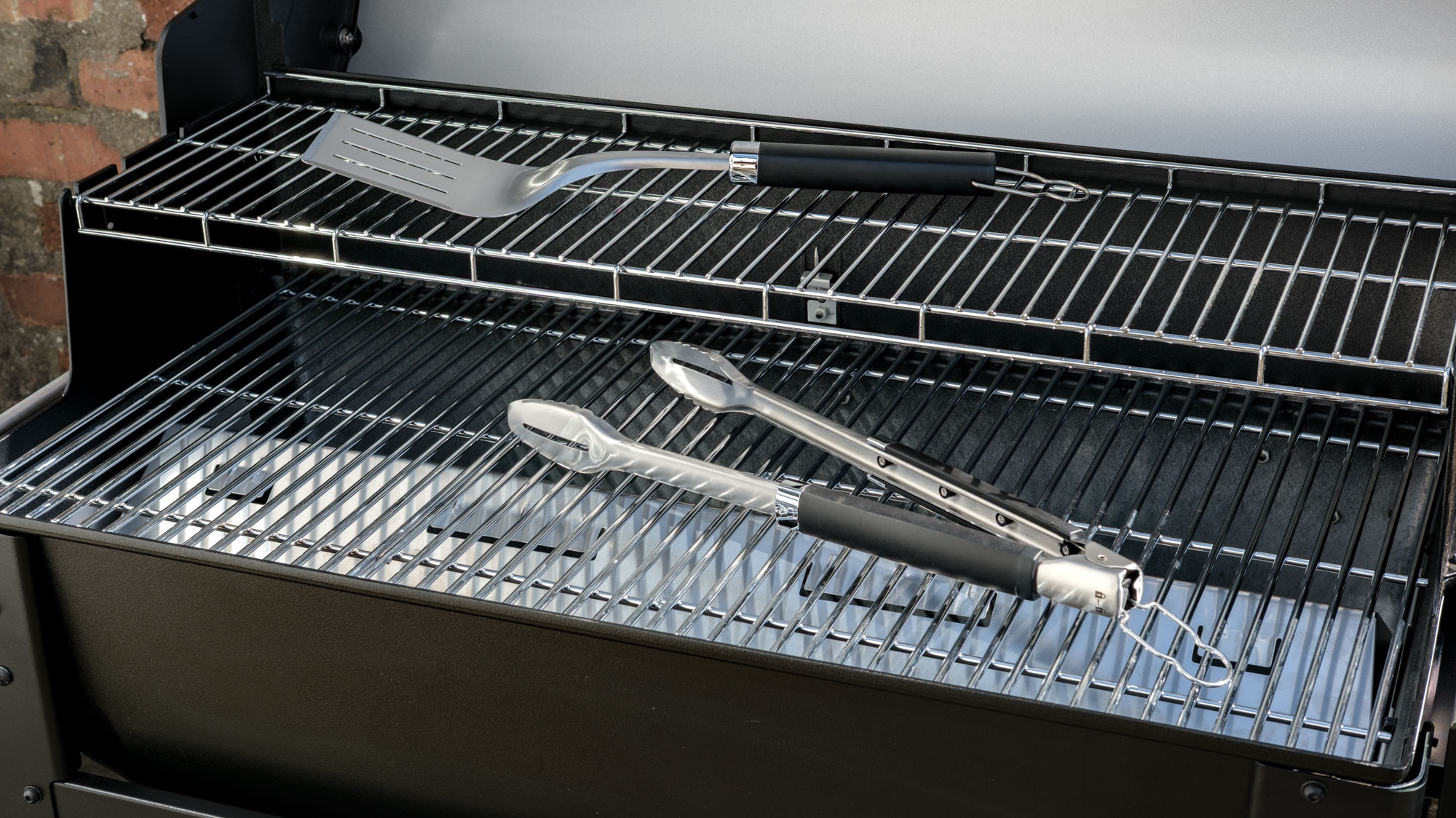
The pellet hopper holds 20lbs of pellets, which I found enough for 8-hours of 275F/135C smoking.
Perhaps my only gripe about the Searwood is its lack of storage as standard. There are no cupboards or built-in condiment/paper trays as on the Traeger Woodridge Elite. There’s an exposed lower shelf but food there is liable to theft by opportunistic dogs, and anything placed there gets dirty easily.
There’s the top of the pellet hopper, but this isn’t ideal either as you need to open it when refilling pellets. I just used it as a beer rest instead (and for that, it worked well).
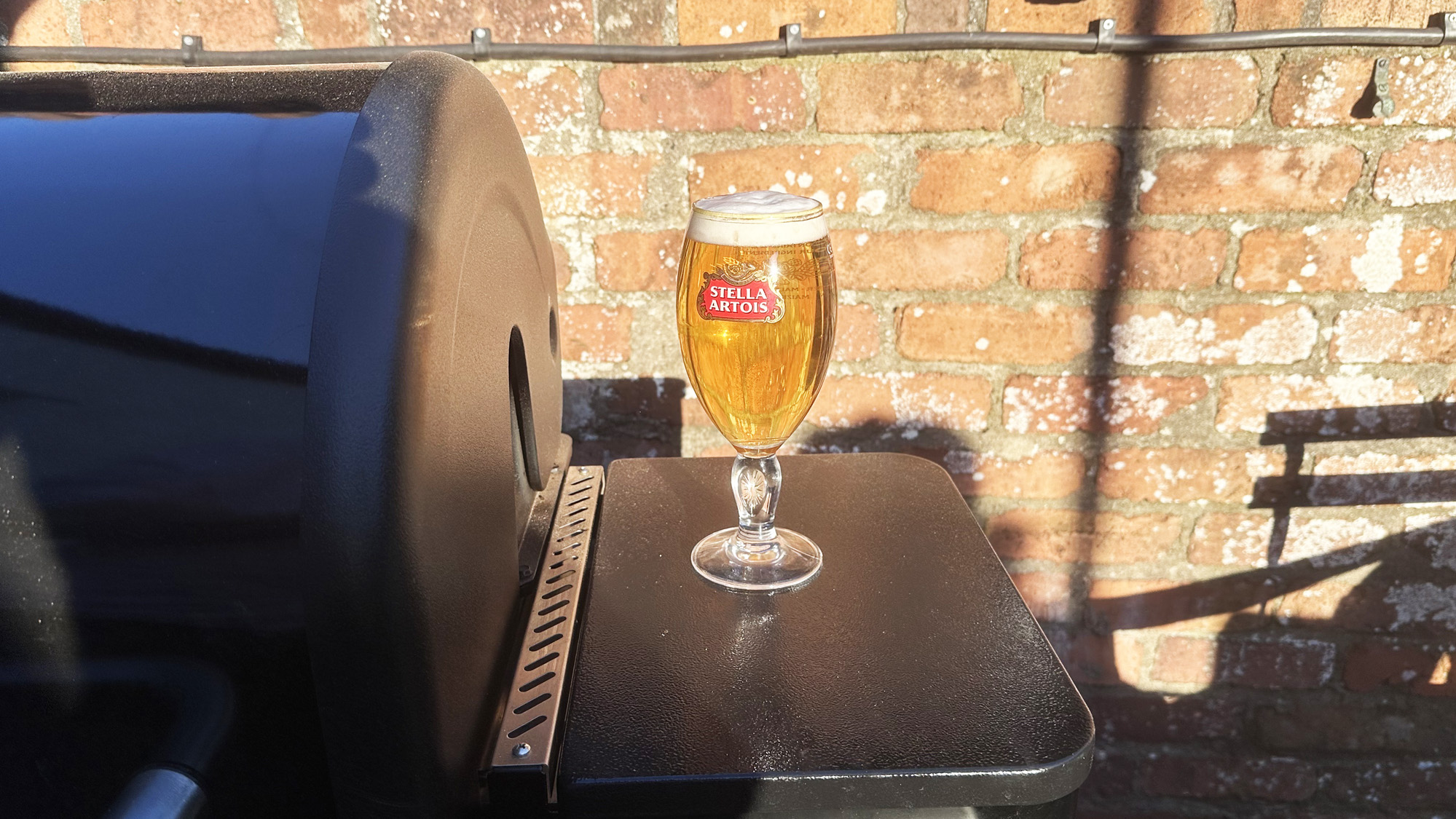
This is a mains-powered electric grill, so be warned: it’s as power-hungry as a viking warlord. Here in the U.K. our electricity meters let us monitor usage in real time. My consumption went through the roof!
Weber Searwood XL 600 review: Controls
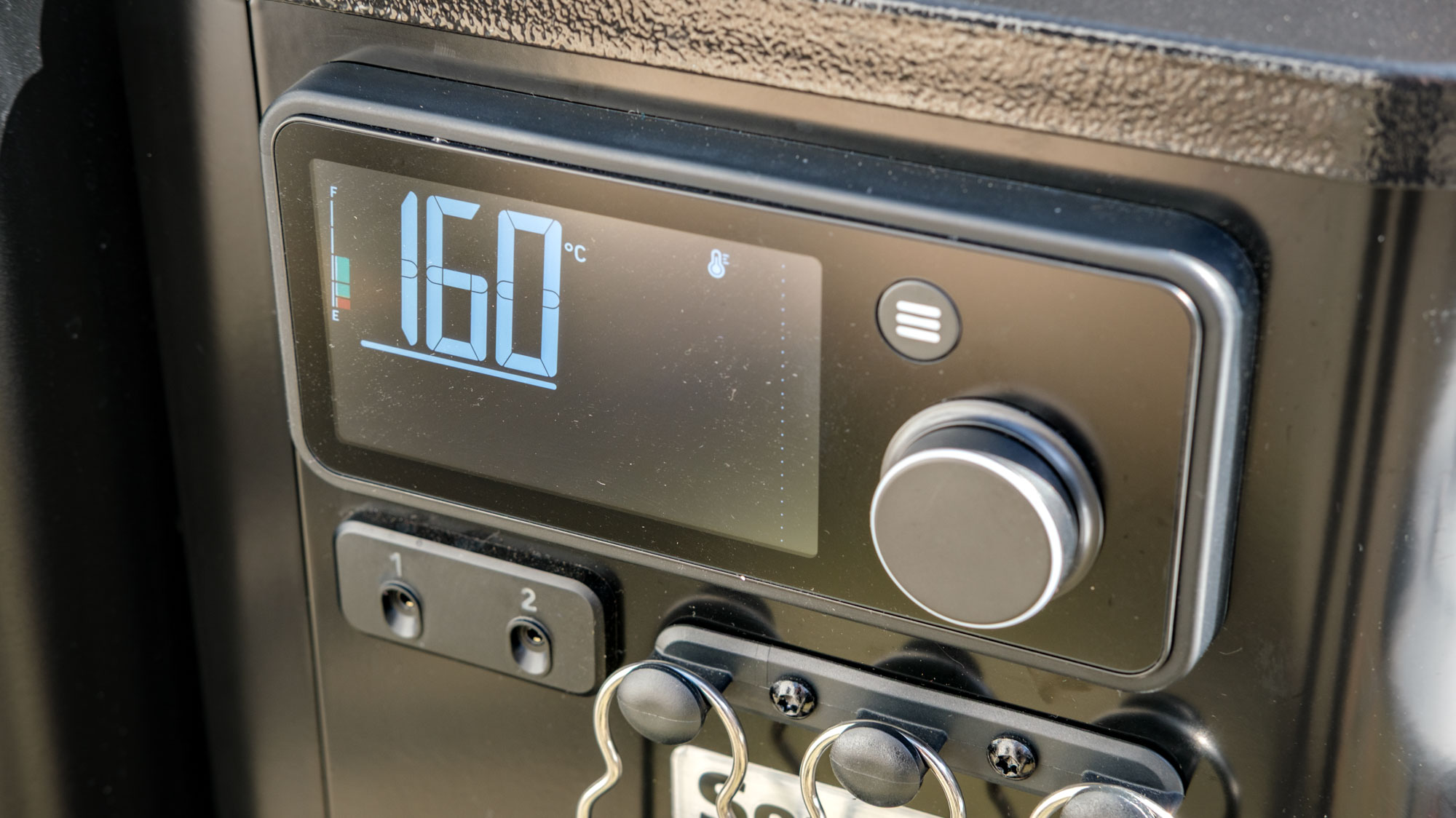
I really enjoyed using the Searwood, in large part because of the user-friendly controls. As a total beginner, the screen, dial and interface made everything super easy to figure out.
There’s a large, bright digital display showing target and internal temperatures, readouts for the two supplied meat probes, a cooking mode indicator and a timer. These are all easy to switch between using the control dial and menu button.
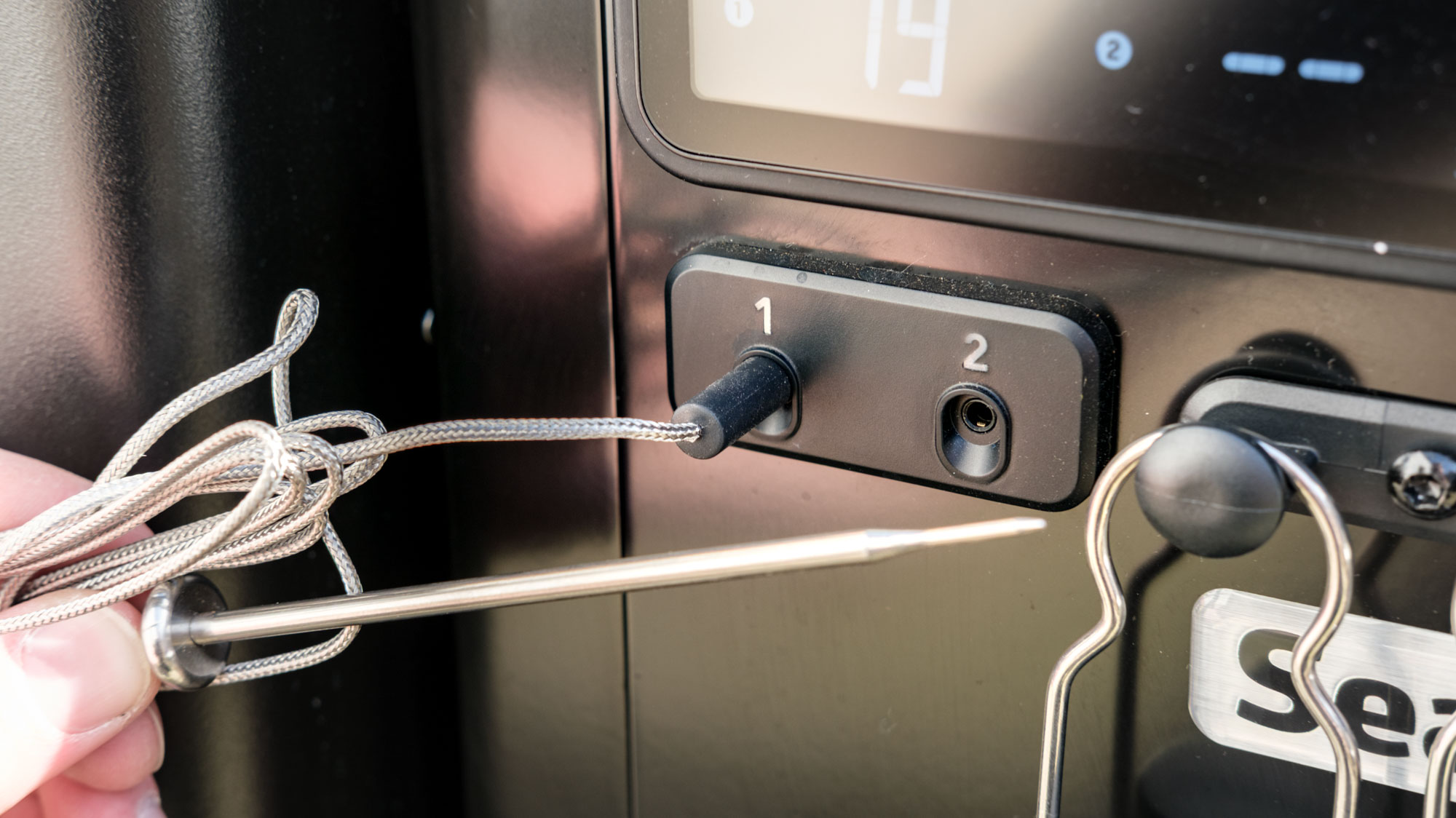
After a quick check of the manual to figure out all the symbols and screen elements, I was able to get going within 10 minutes.
There’s a fuel counter on the screen, too, although this tends to underestimate how much fuel is in the hopper.
Weber Searwood XL 600 review: App
By far the best way to control the Searwood is via its companion app. Now, if you’re thinking “why does a grill need an app?”, believe me I was there too once. Then I used it.
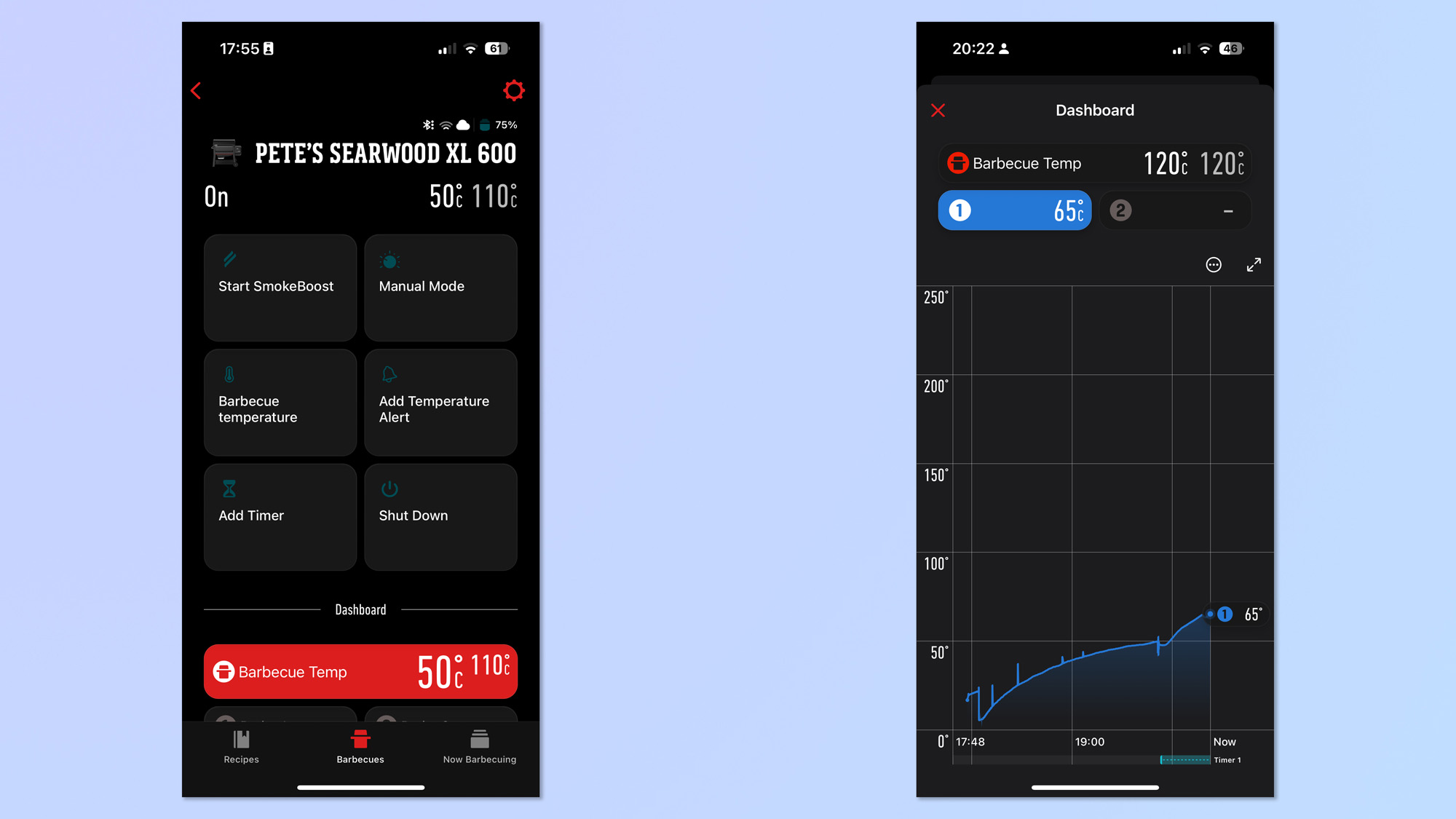
I see a lot of crappy apps in my job, and Weber Connect ain’t one of them. Stable, polished and functional, it totally defied expectations.
The app gives you all the physical controls of the grill and more. You can start/stop the grill, set temperatures and timers, change modes, and even set alerts to give you a heads up if things are getting too hot. It also shows you graphs of your probe temperatures.

The app is easy to set up and hook up to your grill over Bluetooth and Wi-Fi — the latter meaning you can check on the Searwood from anywhere you have an internet connection. Smoking for 8 hours, you need to be able to get on with your life, so remotely monitoring and controlling is super useful. I was able to control one of my cooks while at the pub with friends!
Weber Searwood XL 600 review: Performance
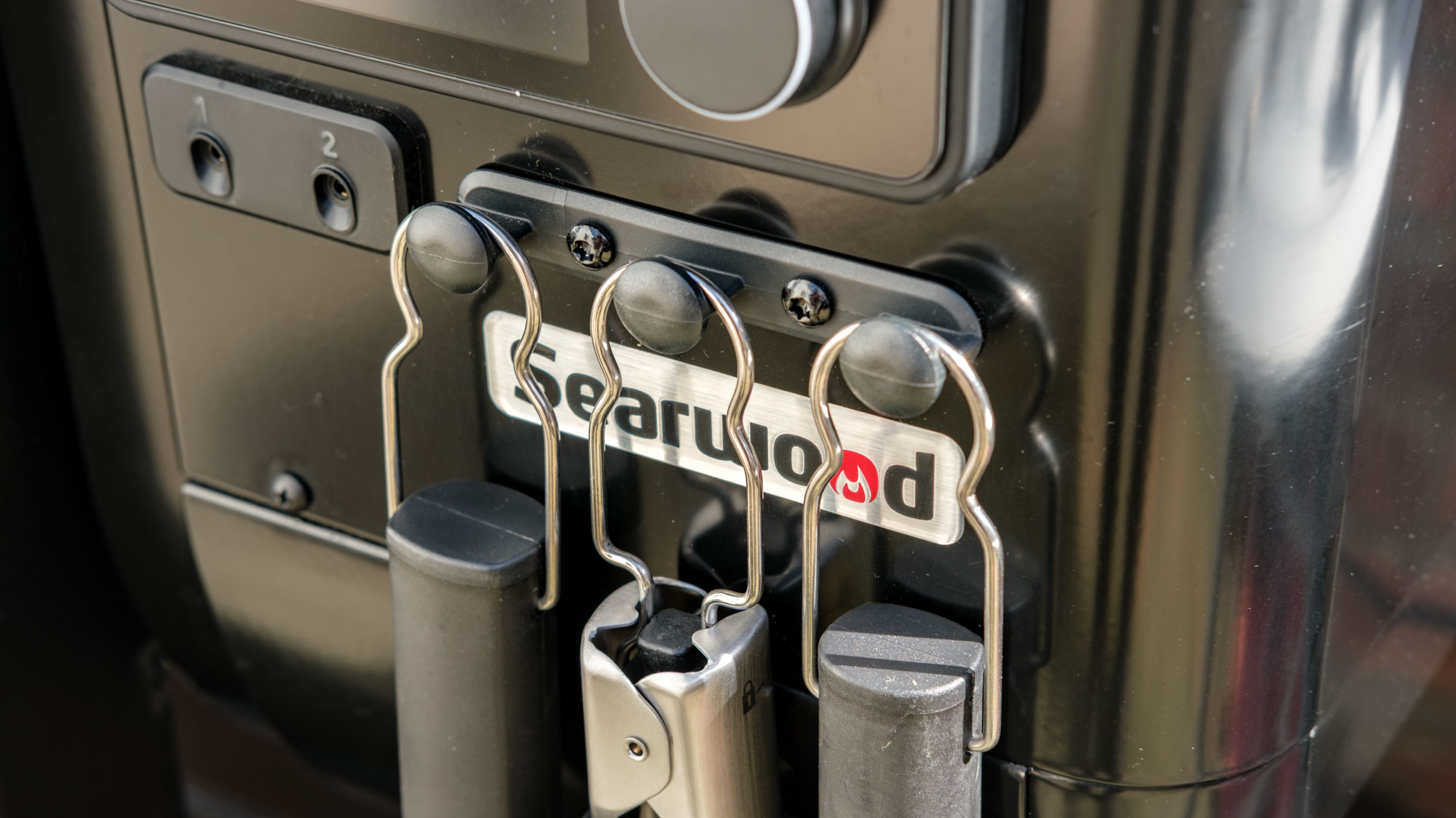
To test the Searwood, I smoked pork ribs, pork sausages and beef brisket. To test the standard grilling capabilities, I barbecued minced lamb koftas, vegan burgers, halloumi, eggplant and corn, feeding six people (with four aforementioned opportunistic, table-height greyhounds pouncing wherever they could).
Smoking — Ribs
My first test was a rack of pork ribs. I applied a dry rub then rested them at room temperature for 45 minutes. The smoker took about 10-15 minutes to get up to 275F/135C.
- Salt
- Pepper
- Cayenne
- Garlic powder
- Onion powder
- Brown sugar
- Turmeric
I placed the ribs in the grill and cooked them for 2 hours 30 at 275F, checking at regular intervals and spritzing with apple cider vinegar if dry.
I then wrapped the ribs in butcher paper and foil, with butter, brown sugar and honey to make a glaze, returning them to the smoker for another 2 hours at 275F.
These ribs were good. I should’ve let them rest after smoking but just dived right in. After 4 hours 30, the meat was pulling away from the bone and was juicy and tender. As you can see from the image below, there was a thick pink line where the cherry smoke had infiltrated the meat.
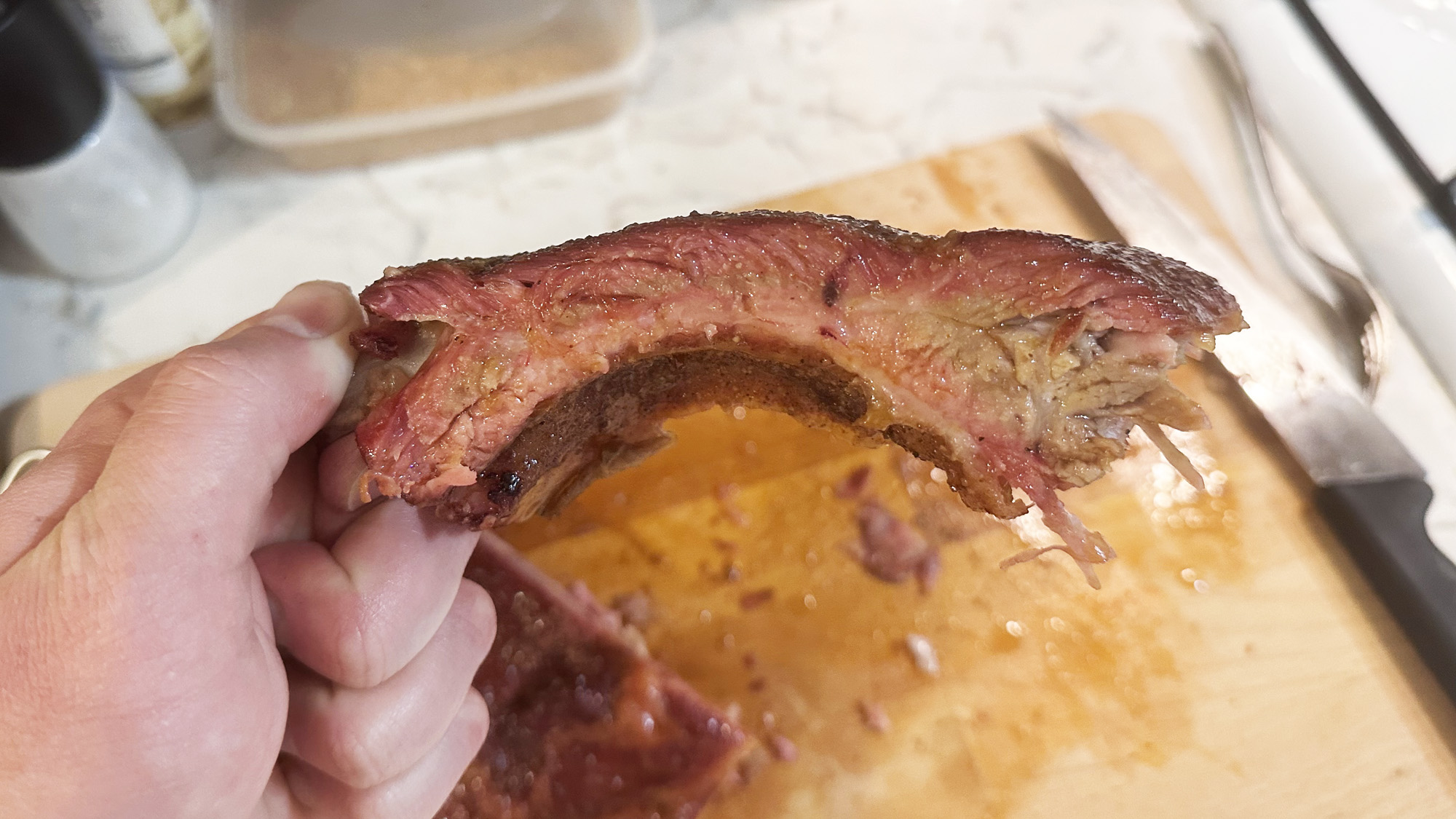
I’m not a heavy smoke fan, so I loved the gentler, sweet smoke of the cherry pellets. The smokiness was definitely there, but wasn’t overpowering, and paired nicely with the spice, saltiness and sweetness of the rub and glaze.
Smoking — Brisket
I smoked a 6.6lb beef brisket for my second test, using an 8-hour smoking recipe. I applied a Texan-style dry rub then smoked at 275F again for an initial 4 hours, checking regularly and spritzing with apple cider vinegar.
- Salt
- Pepper
- Onion powder
- 2 tbsp pork ribs dry rub
I was cooking to temperature rather than time, so I used the Searwood’s two included meat probes, putting one in the brisket’s fattier top section, and the other in the brisket’s leaner lower section. When the temperatures hit 165F, I pulled the brisket off to wrap.
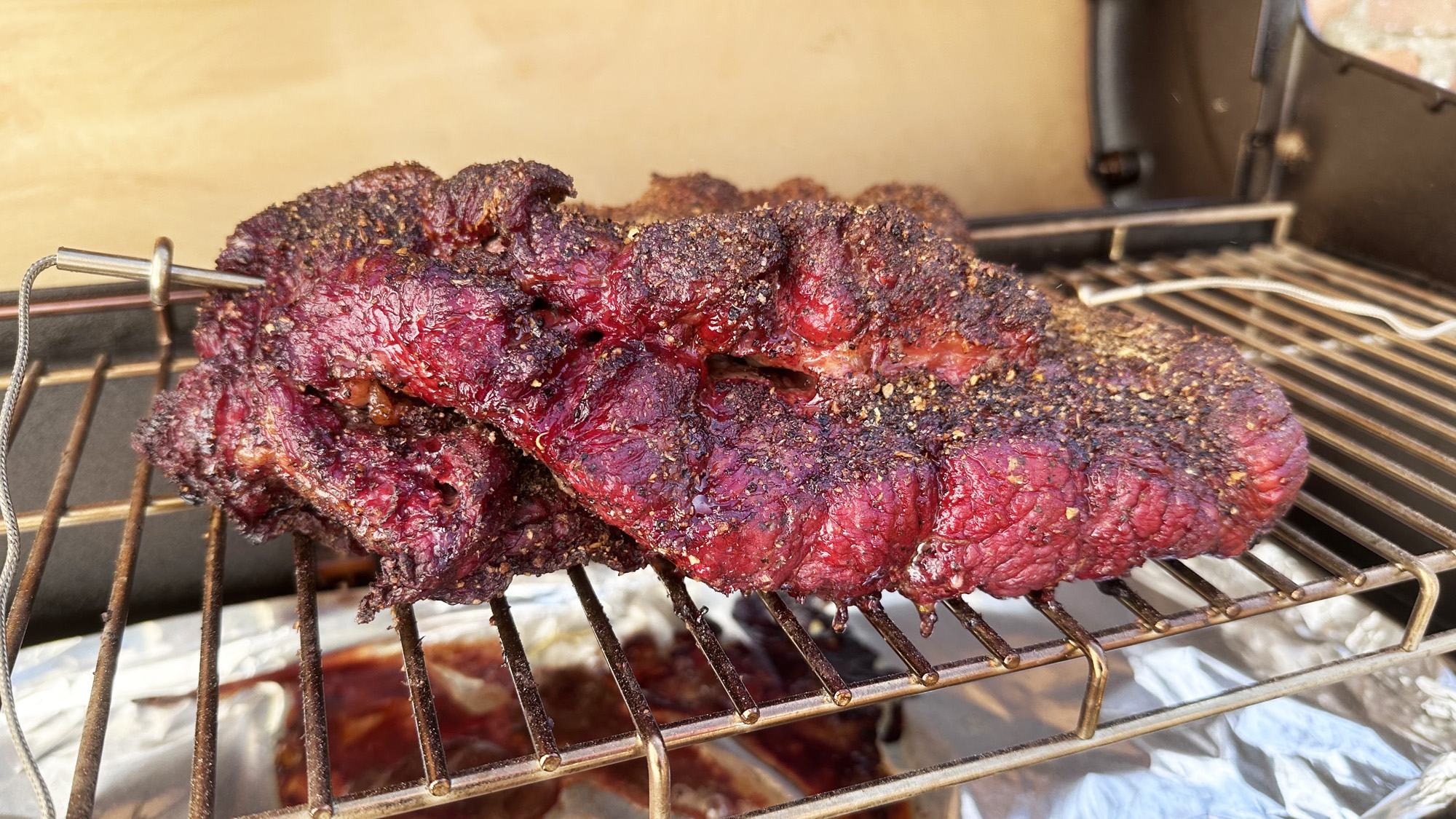
As you can see in the image above, the Searwood created a beautiful pink/red crust after four hours. I wrapped it alongside butter and brown sugar, and cooked again until the lower probe hit 200F/93C, which took around 3 more hours.
Unfortunately, the lower section of brisket ended up a little dry. This is partly because smoking is not a big thing here in the U.K. — as such, briskets here are cut relatively thin, to be rolled and tied for French-style braising.
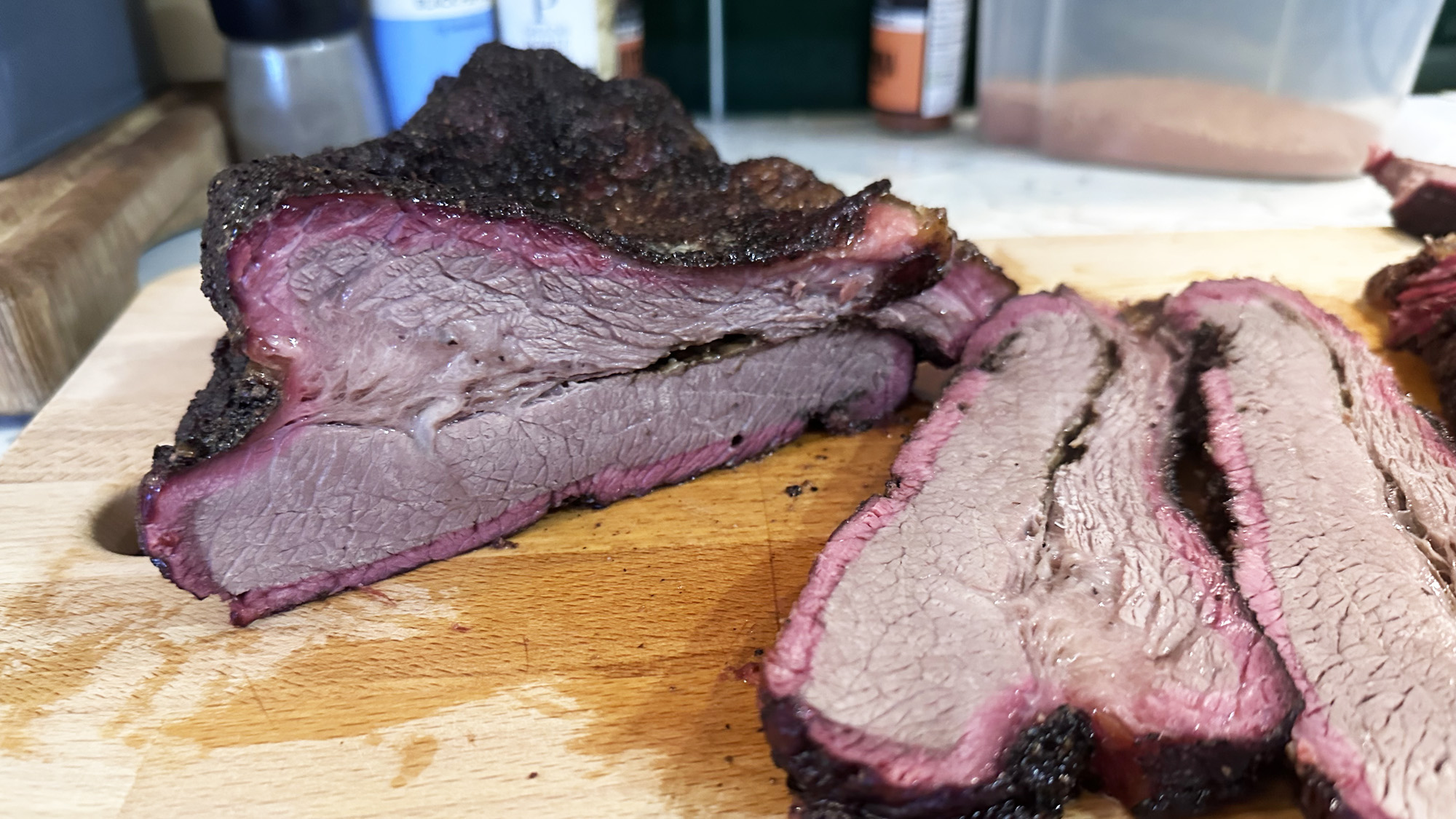
My probe must’ve been off too, because clearly the lower section went higher than 93. Nevertheless, this wasn’t bad for a first attempt: the brisket still pulled apart nicely and the top especially was very juicy. Again, there was a thick pink line around the edge of the meat where the smoke had infiltrated.
The cherry pellets imparted a soft smokiness that contrasted well with the peppery rub and sweet, buttery glaze.
Smoking — Sausages
I then set the Searwood to 225F/107C and smoked some garlic and wild mushroom pork sausages for around 2 hours 30, spritzing with apple cider vinegar at regular intervals to prevent them drying out.
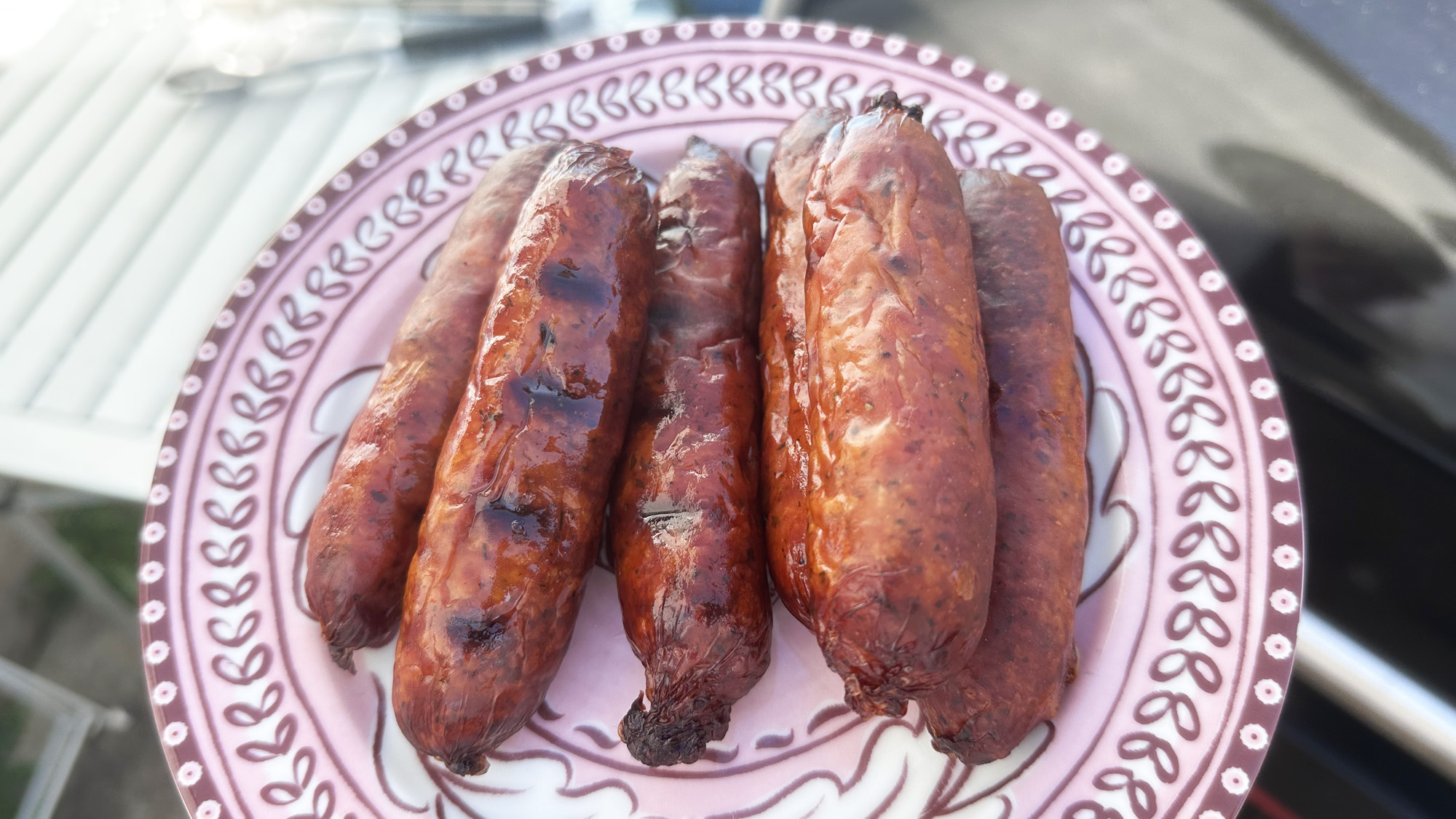
These were a triumph and went down a treat. An opportunistic greyhound, Atticus (named and shamed), even managed to steal one — judging by how pleased he looked with himself, they must’ve tasted pretty good to him, too. Luckily he’s a 100lb dog, so didn’t get sick from the small quantity of garlic in the meat.
The sausages likewise had a pink layer of smoked meat, with a gentle smokey sweetness that paired beautifully with the warmth of the garlic and the earthy umami flavor of the wild mushrooms.
Smoking — SmokeBoost
I then tested the Searwood’s intensive SmokeBoost mode on a cluster of plain pork sausages. This is supposed to replicate the heavier smoke taste of a wood chip smoker, by producing more smoke but keeping the temperature low at 175F/80C.
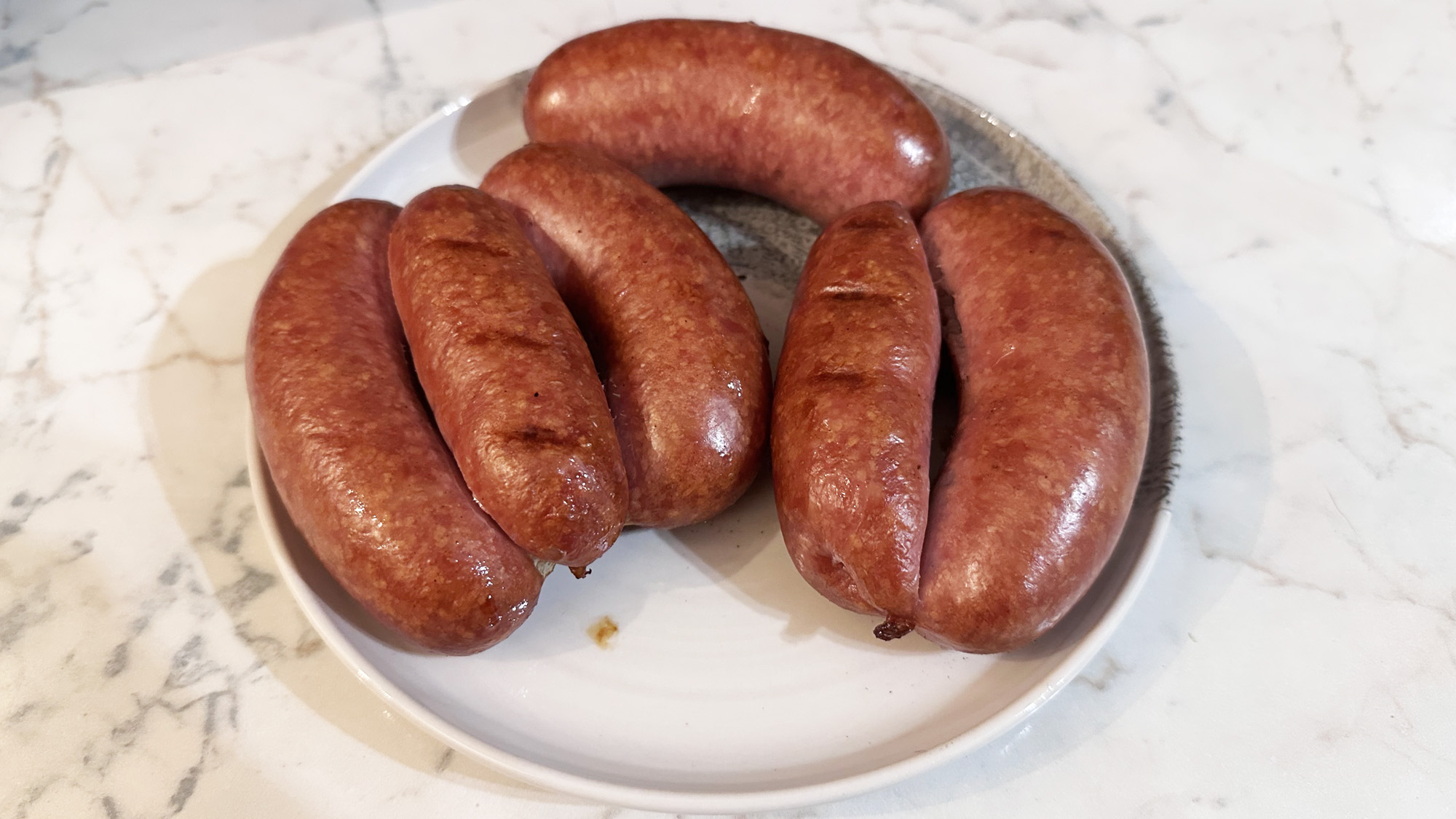
I cooked for 1 hour 45 on SmokeBoost, then upped the heat to 250F/120C for an hour to finish the sausages off, spritzing with apple cider vinegar along the way.
In contrast to the gently smoked sausages of the standard cook mode, my SmokeBoost sausages came out truly smokey. They smelled and tasted exactly like Frankfurters, and had a thick rim of pink smoked meat around the inside. They reminded me of the Wiejska and Kabanos Polish sausages I ate as a kid, so it was pretty cool to be able to make some of my own.
Grilling
The Searwood held its own for traditional grilling too. Its maximum temperature of 600F/315C is hot enough to get a moderately good sear, although charcoal and gas grills will do better.
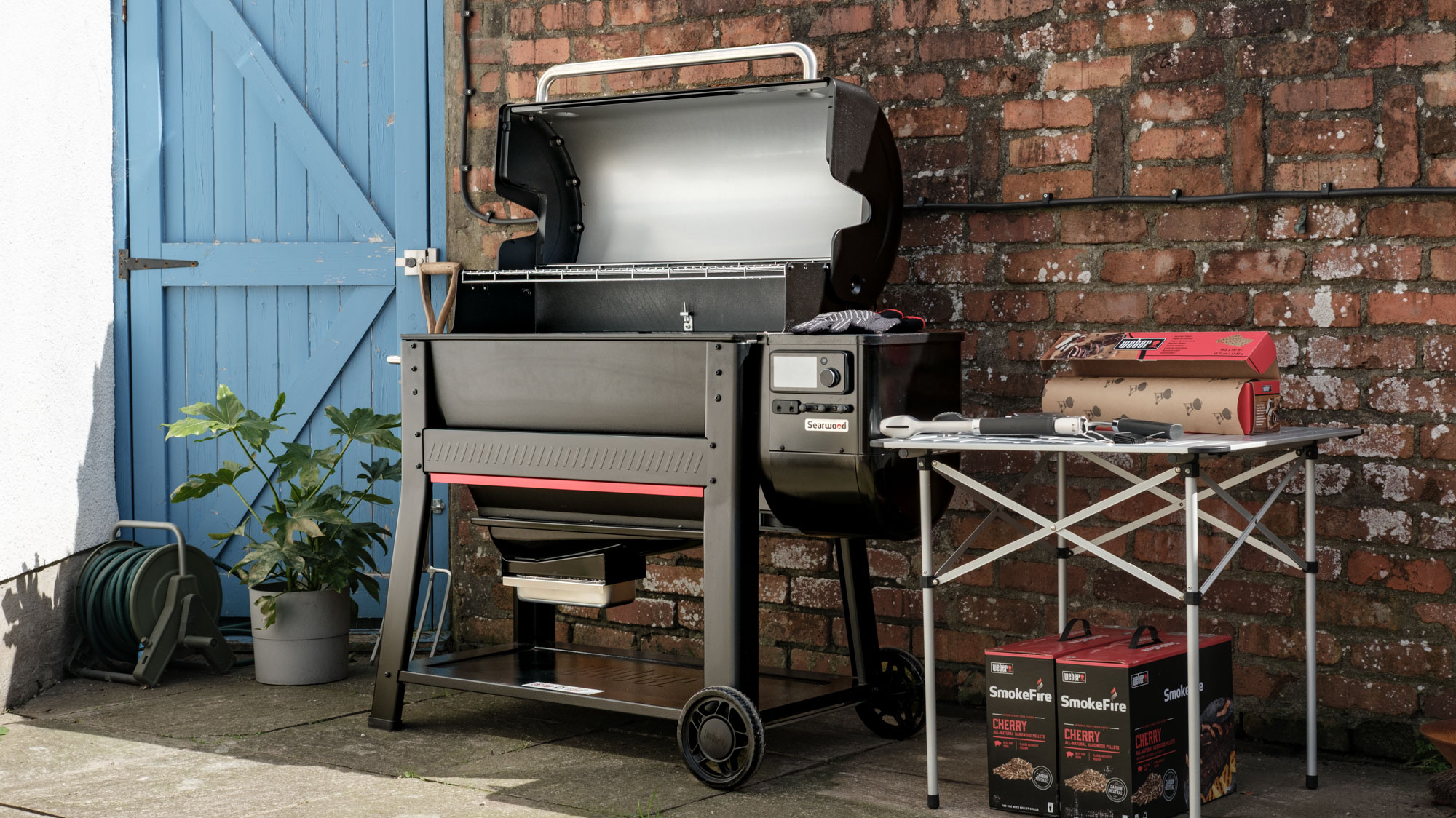
There are distinct temperature zones, with the right-hand grate of the main grill acting as a direct heat zone, the left hand grate semi-indirect heat, and the top grate indirect heat.
The direct heat zone was hot enough to put a sear on my homemade lamb koftas, which ended up juicy and soft inside, with a caramelized sear on the outside.
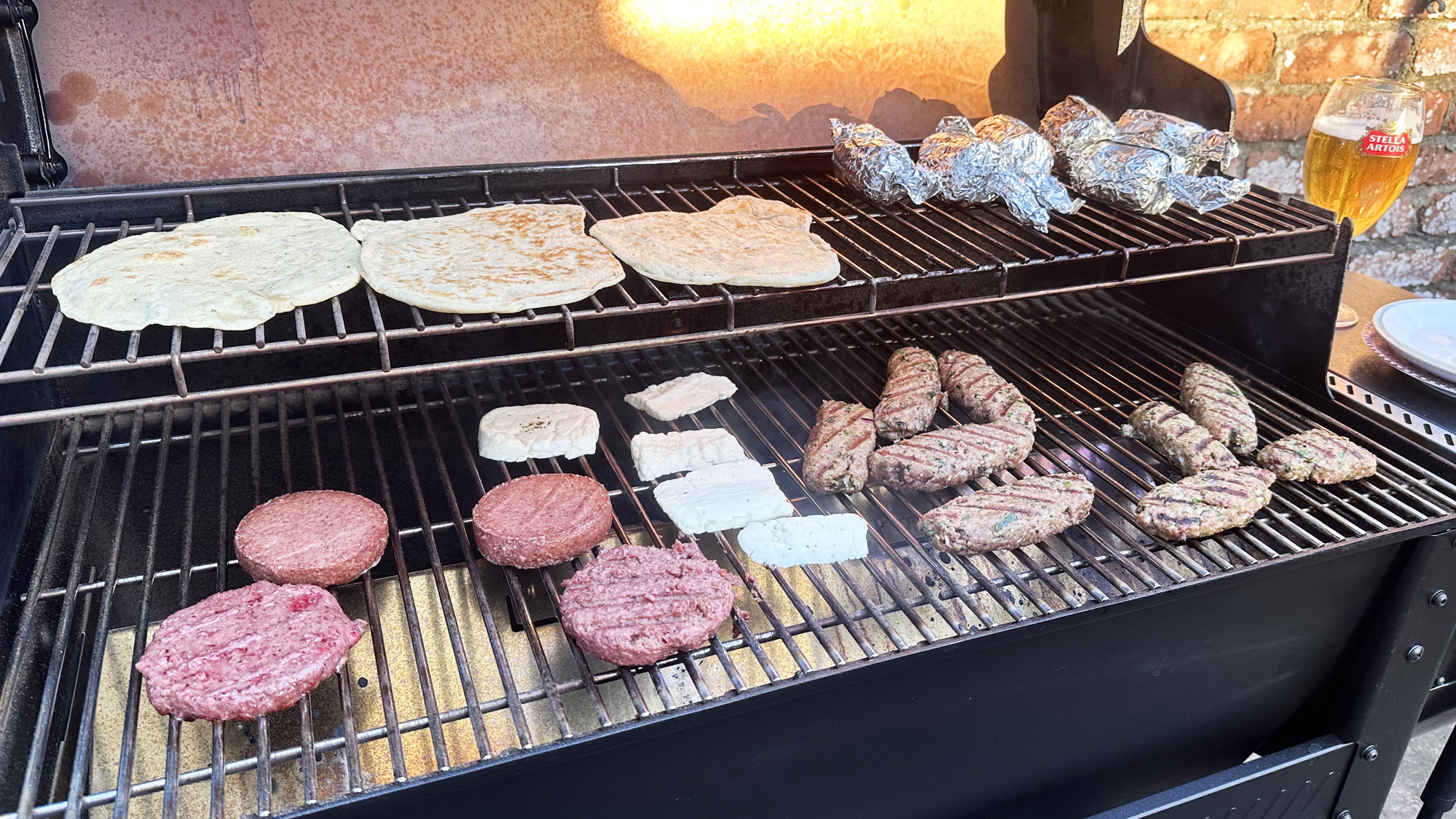
I defrosted the vegan burgers on the cooler left side, before searing those on the hotter grate, with halloumi and eggplant cooking on the middle grate to get a decent but controlled sear without drying them out.
Meanwhile, I used the top grate to slowly cook some buttered, foil-wrapped corn. After 30 minutes, these turned out perfectly— soft, sweet and buttery, with some charred spots for contrast.
I was really happy with the amount of space the Searwood provided, the amount of heat it achieved and the different cooking zones to allow me to control my grilling.
Weber Searwood XL 600 review: Storage & maintenance
You can store the Searwood indoors or outdoors, although it’s heavy and difficult to move, so I advise finding an outdoor spot and leaving it there. Weber didn’t send me a cover, but assured me the Searwood is built to withstand the elements without one — this includes the electronics panel and controls.
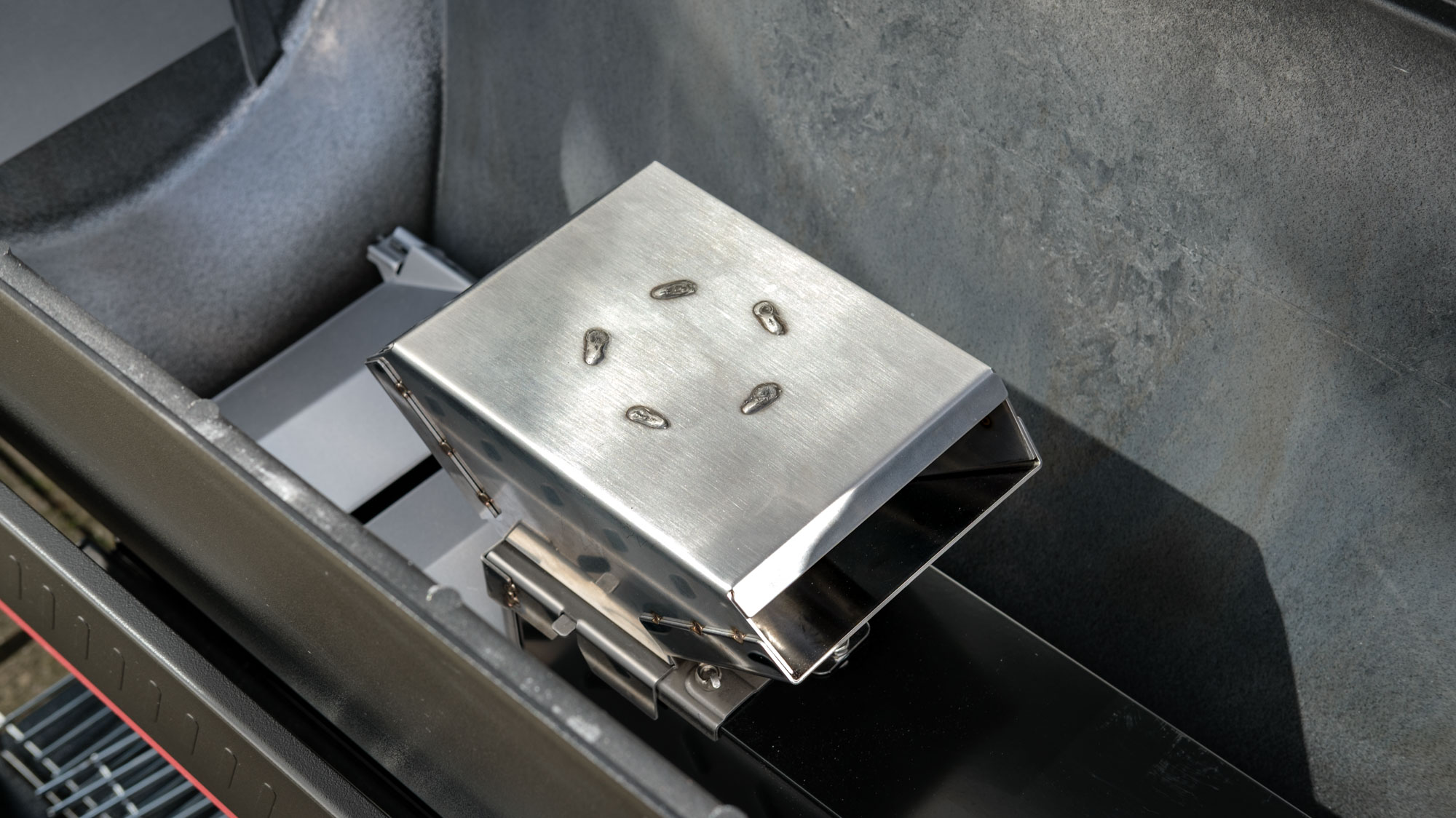
Cleaning after smoking is straightforward: simply wipe down the ash from the grates and internal components. The inner parts, including the smoke box, diffuser and grease guards all come out easily for cleaning. The grease funnel can be removed, as can the lower grease trap, which uses Weber disposable trays to collect grease and ash for easy disposal.
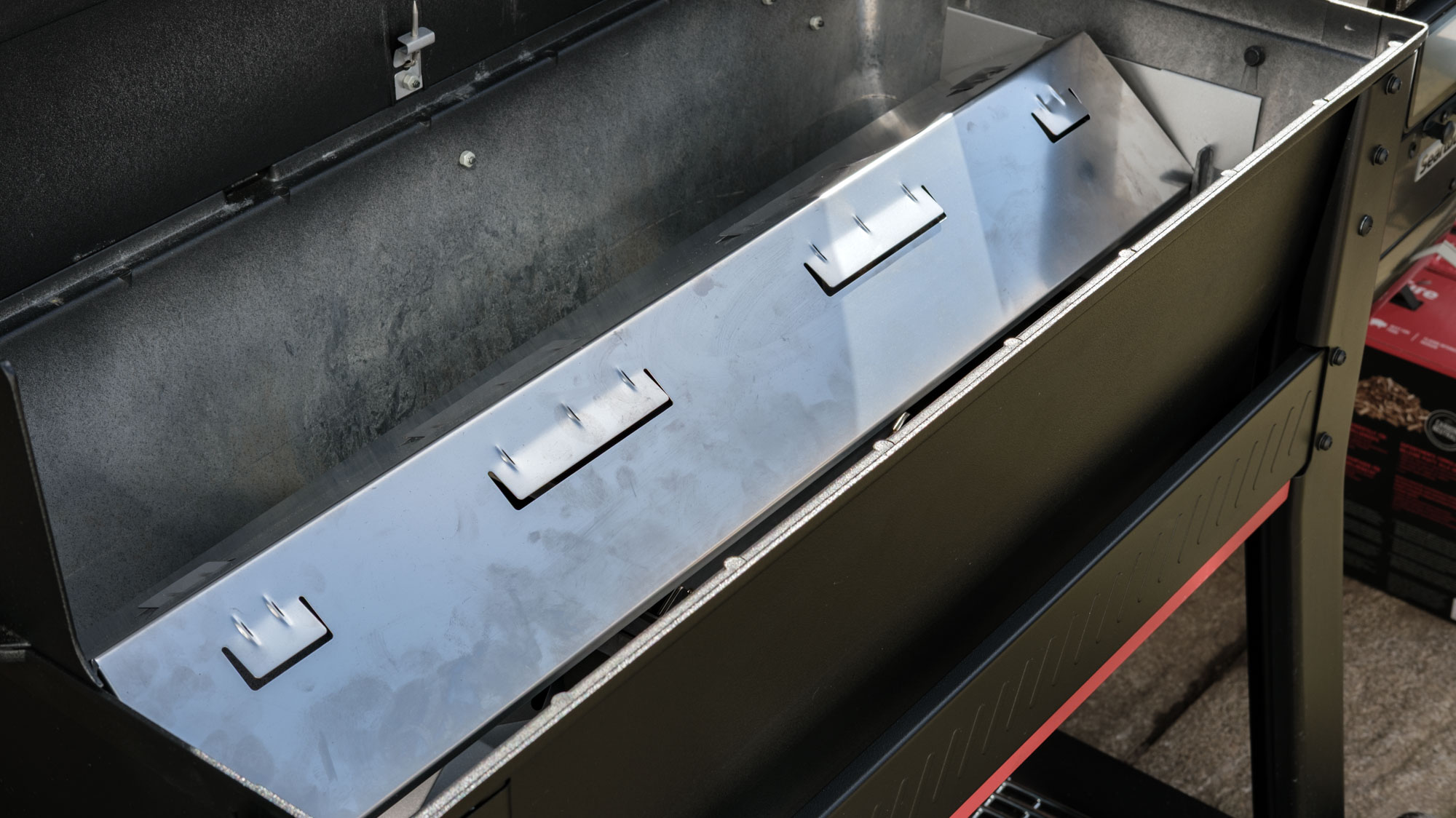
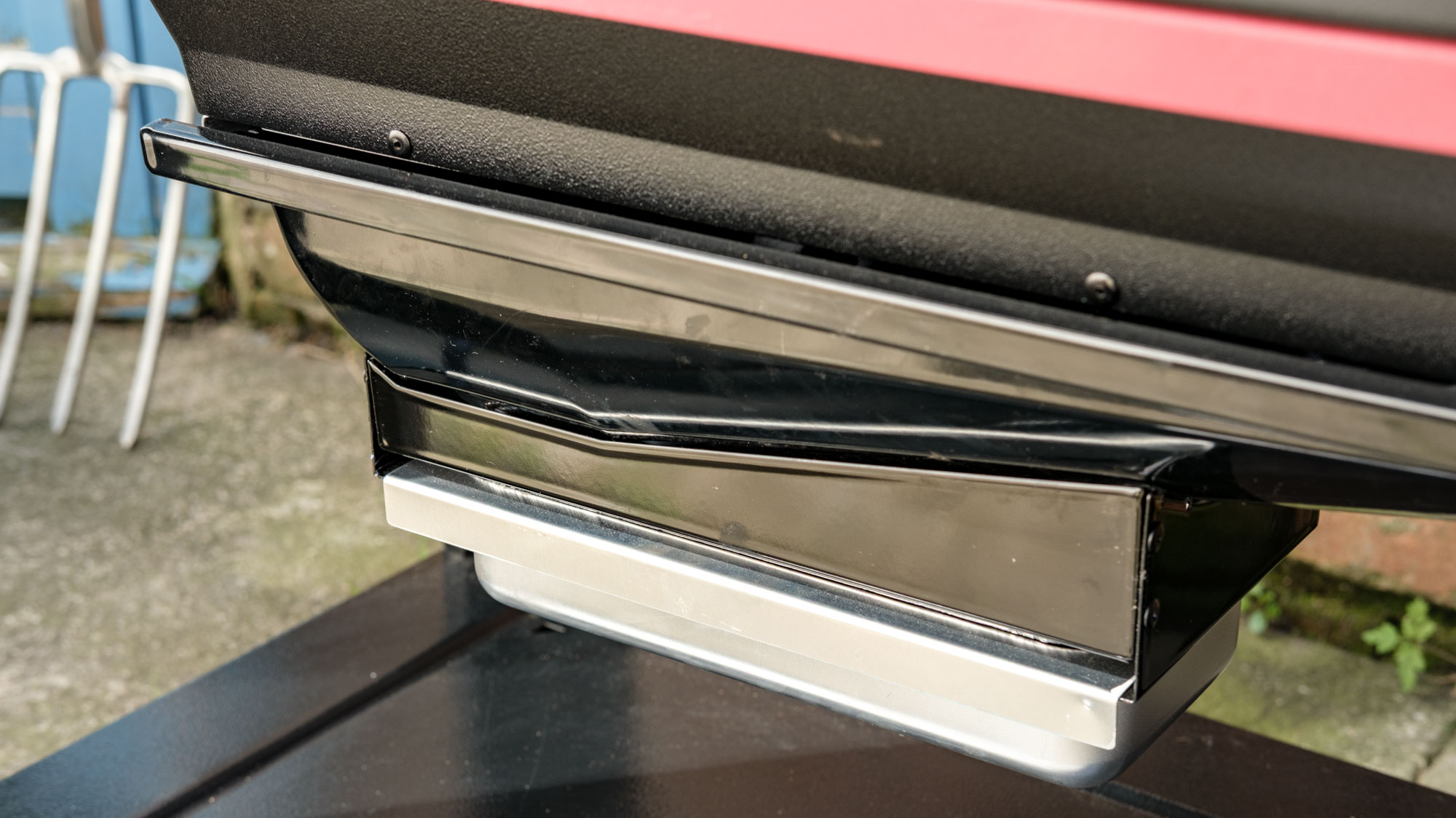
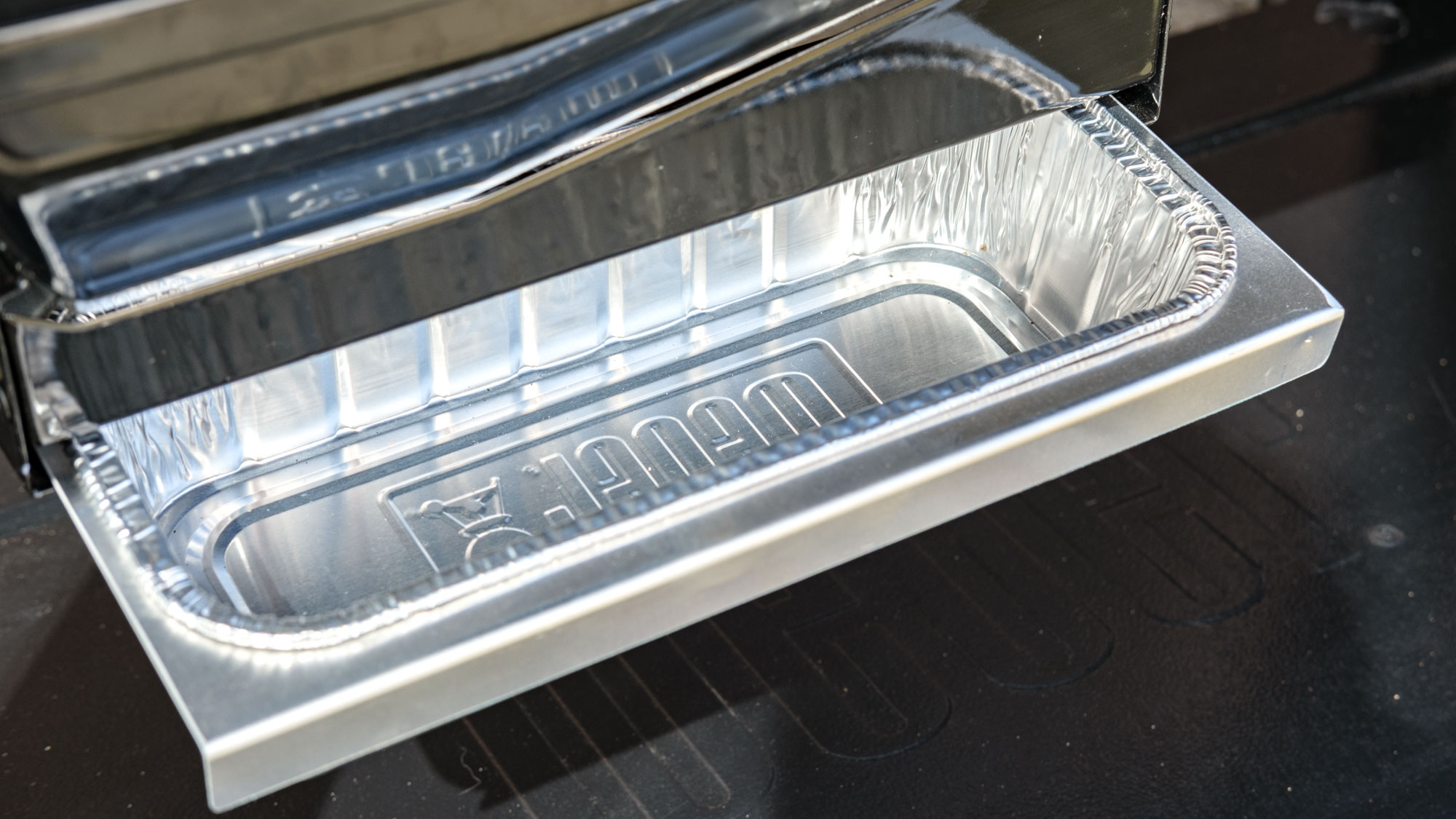
Cleaning after grilling is, as with any barbecue, a pain in the butt. It’s no harder than any other grill though. Get some good grill-safe degreaser, some scouring pads and a scraper and you’ll be fine.
Weber Searwood XL 600 review: Verdict
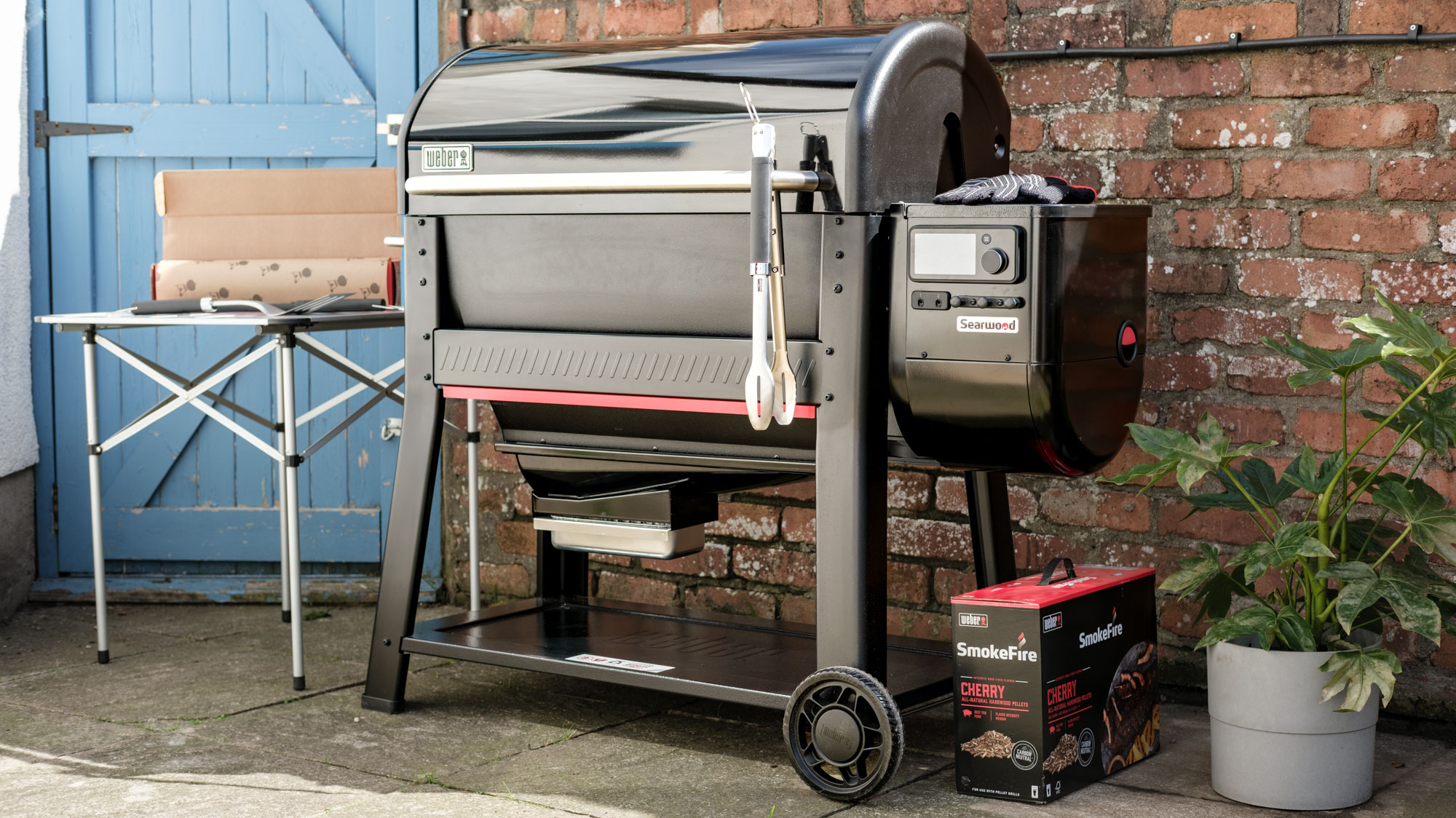
I’m really impressed with how the Searwood performed, particularly given I was a smoking novice before using it. I found the smoker easy to understand, yet it provided me all the control I needed over my smoking. This is an ideal grill for new or intermediate smokers, although bear in mind that pellets give a softer smoke taste than wood chips.
A mid-range pellet grill with user friendly controls, a fantastic companion app and plenty of cooking space. It produces great smoked food and is perfect for both new and intermediate smokers.
If you’re in the U.K., our changeable weather often makes barbecues a spur of the moment affair — the scarcity of pellets could therefore be an issue if you want to grill, as you can’t just pop to the shop and buy some. That’s a pretty minor issue, though.
Otherwise, the Searwood’s fantastic build quality, easy to use controls, and effective smoking make this an easy recommendation from me. Happy smoking!

Peter is a Senior Editor at Tom's Guide, heading up the site's Reviews team and Cameras section. As a writer, he covers topics including tech, photography, gaming, hardware, motoring and food & drink. Outside of work, he's an avid photographer, specialising in architectural and portrait photography. When he's not snapping away on his beloved Fujifilm camera, he can usually be found telling everyone about his greyhounds, riding his motorcycle, squeezing as many FPS as possible out of PC games, and perfecting his espresso shots.
You must confirm your public display name before commenting
Please logout and then login again, you will then be prompted to enter your display name.
